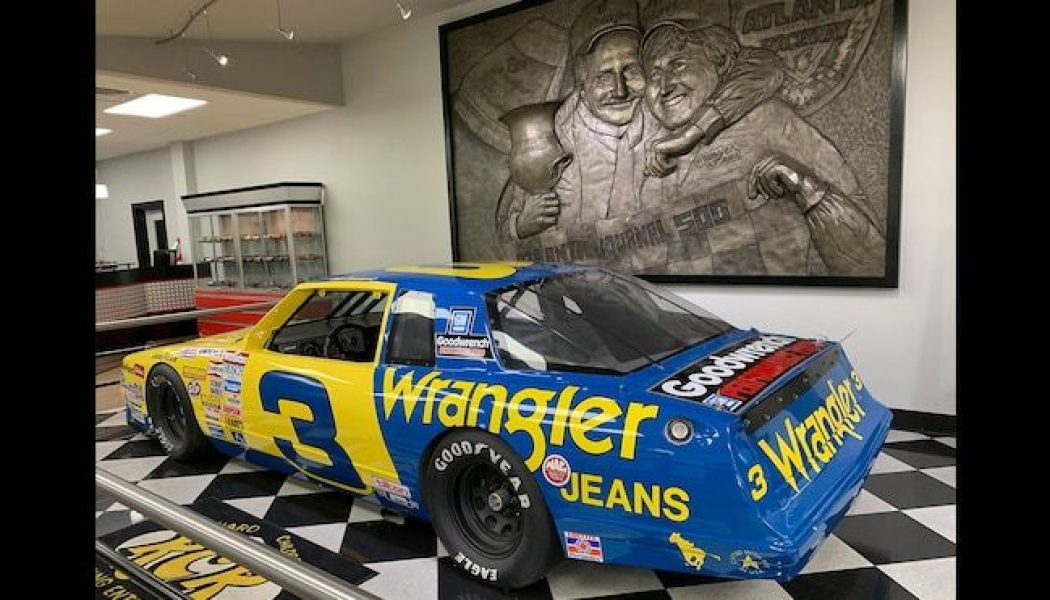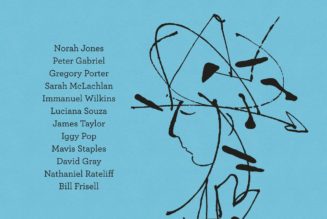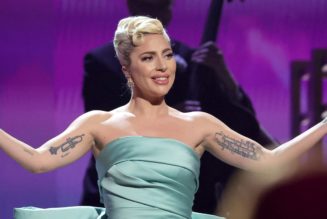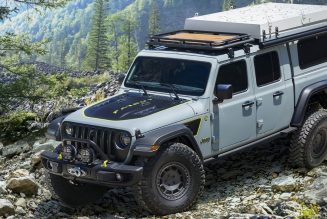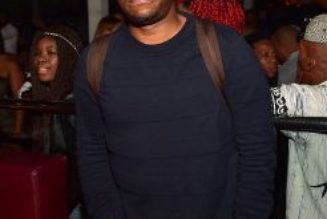MotorTrend Group visits Richard Childress Racing’s massive NASCAR museum to check out some cool history and some cooler cars!
While we were at Richard Childress Racing (RCR) waiting to shoot a story in connection with MotorTrend’s new docuseries, NASCAR 2020: Under Pressure, we decided to check out the Richard Childress Racing Museum and, man, we’re glad we did since it’s overflowing with vintage race cars and NASCAR history, especially if you’re a Dale Earnhardt fan. So come along as we check out some of the cars from the golden age of NASCAR.
Here’s one of the cars that put the RCR on the map with the racing team’s first two NASCAR Winston Cup Championships in 1986 and 1987. Dale Earnhardt was the driver, with primary sponsorship from Wrangler Jeans. RCR earned 16 victories and 47 top-10 finishes in those two seasons. The bronze sculpture in the background is Earnhardt and Childress from 1984 at Atlanta Motor Speedway.
This 1976 Laguna was driven by Richard Childress and is still fielding the original motor. Childress started racing in 1965 with a car he picked up for $20. By 1969, he had formed Richard Childress Racing—and the rest is history.
Another one of Richard Childress’ early race cars. Hey, a 375-hp fuel-injected Chevy in this lightweight package sounds like a good time.
In addition to cars, the museum has a lot of other memorabilia, from giant checks to retired race engines. Sorta want this one for a project.
Here you can see the famous “Quicksilver” that Earnhardt drove in the 1995 Winston Select. This was the first time RCR changed from the black paint that’s synonymous with car No. 3.
This is the Monte Carlo used in road course postseason exhibition races in 1996 and 1997 at the Suzuka Circutland in Suzuka, Japan. Earnhardt finished sixth in 1996, but in 1997, after qualifying in the rain, he crashed on lap 32, finishing 27th. This is also the car Earnhardt won the pole in for the 1996 Watkins Glen race, just two weeks after breaking his collarbone and sternum in a Talladega crash.
This Sam Bass designed Wheaties paint scheme was used for The Winston in 1997. Earnhardt was the first motorsports celebrity to be on a box of Wheaties.
Famed pop artist Peter Max designed this wild paint scheme for The Winston in 2000. Earnhardt struggled in this race but clawed his way to third place by the end. As you can see, this room is packed with vintage Earnhardt race cars.
Richard Childress is an avid outdoorsman. In fact, the museum has an entire wing dedicated to wildlife preservation, so it’s natural for the team to have Bass Pro Shops as a sponsor. This car competed in ten NASCAR Winston Cup events, and Earnhardt earned the pole in its September 1995 debut at Richmond then claimed a victory at Martinsville three weeks later.
Dale Earnhardt’s black paint scheme on his No. 3 car is just so iconic and fits in perfectly with his “Intimidator” moniker. At the museum, there’s an entire wing of them.
The No. 3 Oreo Monte Carlo was driven to a second place in the 2001 Budweiser Shootout at Daytona. Earnhardt was leading with two laps to go when Tony Stewart got by and won by 0.0145 second.
This painting captures the excitement of the famous 2000 Winston 500 at Talladega where Earnhardt displayed some of his best driving ever.
Dale Earnhardt was 15th on the final restart (lap 174), slipped to 23rd and had only moved up to 18th by lap 183 of the 188-lap race. But he fought his way to the lead on the next-to-last lap with the help of Kenny Wallace and Joe Nemechek. The victory, by a margin of 0.119 second, was Earnhardt’s record tenth at Talladega and the 76th, and final, NASCAR Winston Cup victory of his career.
This RCR car (chassis 20) won the season-ending race at Atlanta Motor Speedway and then did it again in March finishing 4.28 seconds ahead of second-place Terry Labonte. This car earned six top-10 finishes in the seven races it competed in, including second in the 1996 Coca-Cola 600 at Charlotte.
Everywhere you turn at the museum is another cool car with another great story, such as this road race car that took the checkered flag at Sears Point in 1995.
This shredded tire happened on the last lap of the 1990 Daytona 500 race. Earnhardt was in first place, and a victory was all but ensured. Sadly, he hit a piece of track debris which shredded the tire and cost him the race. Earnhardt was never able to win Daytona again until 1998 when a little girl and a lucky penny would tip the scales in his favor.
And here’s that 1998 Daytona 500 “lucky penny” car in all its post-race glory. After 20 attempts he was finally able to win this race in RCR chassis number 34. The race finished under caution, but Earnhardt led the most laps (107 of 200, including the final 61) and had the fastest lap of the race at 190.006 mph on lap 183.
As we said, there’s more to the museum than just cars. Here’s a chunk of the asphalt from the Daytona speedway.
The museum is well laid out with many of the cars posed in shop scenes that help give a feel for racing in that era.
They have even preserved the entire Goodwrench Service rig that Earnhardt used. The scope of the museum is truly impressive.
Around the rig, on every wall, are signatures and messages from fans of RCR and Dale Earnhardt. It’s quite a sight.
Another section of the museum is dedicated to the science of NASCAR and how RCR developed cars, including this clay model of a 1990 Lumina from the days before Solidworks and heavy use of CAD.
This area gives a great feel for what it was like to build the NASCAR cars of the 1990s and early 2000s.
After Earnhardt was killed at Daytona in 2001, this No. 29 Goodwrench car, driven by Kevin Harvick (in only his third NASCAR race) managed to pull off one of the most exciting wins in NASCAR history. He became the first NASCAR Winston Cup rookie to win a race in less than 10 starts, and he did it by beating Jeff Gordon by 0.002 second!
There are more modern cars in the museum, as well, including this car that Austin Dillon drove to his first career Monster Entergy NASCAR Cup Series victory in the Coca-Cola 600 at Charlotte in 2017.
And another win for the No. 3 car, this time piloted by Austin Dillon, at the Dayton 500 brings our story full circle. This is just a sampling of all the racing history at the RCR museum, so if you’re ever near Welcome, North Carolina, we highly suggest you stop by to see how they are preserving our racing heritage.
